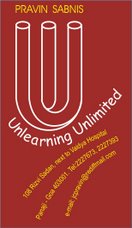Different persons wake up differently.
Some wake up with a shock. They are shocked as they realise they have woken up late and they have to rush to catch up on commitments.
Some wake up with anger. They growl and roar against the one who may have directly or indirectly roused them out of their sleep.
Some wake up with an air of resignation. They do not like getting out of bed but they also feel helpless about it.
Some wake up lazy and sleepy. They drag themselves to daily chores like washing their face with eyes closed.
And there are others who choose a response that was suggested to me by my favourite muse, Fr Peter Gatti – an Italian priest who was my teacher for just one year at Don Bosco School. But he continued to be an inspirational influence for a few more significant years of my life, till death snatched him away.
Fr Gatti would repeatedly urge us, ‘when you wake up, you must be happy!’ …and each time, he would add, ‘ask why?’… and each time, we would comply, ‘Why?’ … and he would declare, ‘because, you are alive! ... because you did not die in your sleep!!’
The simply act of waking up can make or break our mood for the day. We must choose to take ownership of the gift of life and look forward to the journey across opportunities and challenges. It is said so well that well begun is half done. When we wake up with a cheer, we choose to celebrate life!
Each day is a gift, truly dear…
Wake up to it with a big cheer!
- Pravin K. Sabnis
Some wake up with a shock. They are shocked as they realise they have woken up late and they have to rush to catch up on commitments.
Some wake up with anger. They growl and roar against the one who may have directly or indirectly roused them out of their sleep.
Some wake up with an air of resignation. They do not like getting out of bed but they also feel helpless about it.
Some wake up lazy and sleepy. They drag themselves to daily chores like washing their face with eyes closed.
And there are others who choose a response that was suggested to me by my favourite muse, Fr Peter Gatti – an Italian priest who was my teacher for just one year at Don Bosco School. But he continued to be an inspirational influence for a few more significant years of my life, till death snatched him away.
Fr Gatti would repeatedly urge us, ‘when you wake up, you must be happy!’ …and each time, he would add, ‘ask why?’… and each time, we would comply, ‘Why?’ … and he would declare, ‘because, you are alive! ... because you did not die in your sleep!!’
The simply act of waking up can make or break our mood for the day. We must choose to take ownership of the gift of life and look forward to the journey across opportunities and challenges. It is said so well that well begun is half done. When we wake up with a cheer, we choose to celebrate life!
Each day is a gift, truly dear…
Wake up to it with a big cheer!
- Pravin K. Sabnis


